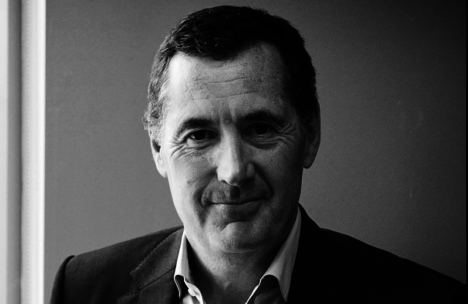Four decades on: Tom Moult and Philip Sheldon reflect on the loss of creativity
Forty years on, when office boys, luncheon vouchers and mechanical enlargers are but a memory, is advertising and output any better? Tom Moult and Philip Sheldon sat down to discuss what has changed since they first entered the industry together in London exactly four decades ago.
Forty years after they first walked through the door together as wide-eyed younglings at Benton & Bowles in London, advertising veterans Tom Moult and Philip Sheldon have come together to talk about the changes in the ensuing years – concluding that creativity has been the victim of the passing of the years.

Moult: “I remember the demeanour of clients used to be ‘I’m up from the chocolate factory, let’s see what you’ve got lads’. They didn’t claim to know”
Moult rose to become chairman of Euro RSCG (now Havas) and is now head of consultancy Walker Moult, while Sheldon became one of Australia’s most regarded planners, working with agencies including DDB, DMB&B and Leo Burnett before founding Storymining.
The pair kicked of their life in advertising working on, of all brands, Durex.


There is much truth in what they say, but I’m an old white man who has been in the business for nearly 50 years, so of course, you would expect me to say that. The truth is that theatre ( a very large chunk of advertising is theatre) needs its traditional platform, but of all its multitude of tools, its creativity can still work without any or all of them, save one; it must always have mystery. Show the card trick and it is instantly boring, clear away the mystery and it becomes common place.
In my youth, an artist was a man in a beret, with a goatee, his waistcoat was worn open and without a jacket, over not a shirt, but rather a skivvy, usually black, with a crew, vee, or turtle neck. he was not uniform, but he was essential to the arts as a kind of multiple mystery man. the female (mystery woman ) version usually wore glasses, hand spun wool and tweed, velvet or corduroy, never wore makeup and usually smoked, sometimes with a holder. They were not the entire mystery, just the human face of it.
Hey Tommy,
It’s easy to see how these agency media blokes snuck up on you guys and stole the lollies. They stuck with the money trail and still have it by the neck.
Cheers,
Robbo.
Your summation is spot on Tom. The irony is that the cost cutting has ended up with clients having to spend much more, to get much less return on their investment. It’s what happens when the idea is devalued, and there are more analysts in the room than squeaker pens and butchers’ paper.
London to a brick that Tom Moult didn’t say “lightening in a jar”.
It was better in my day…